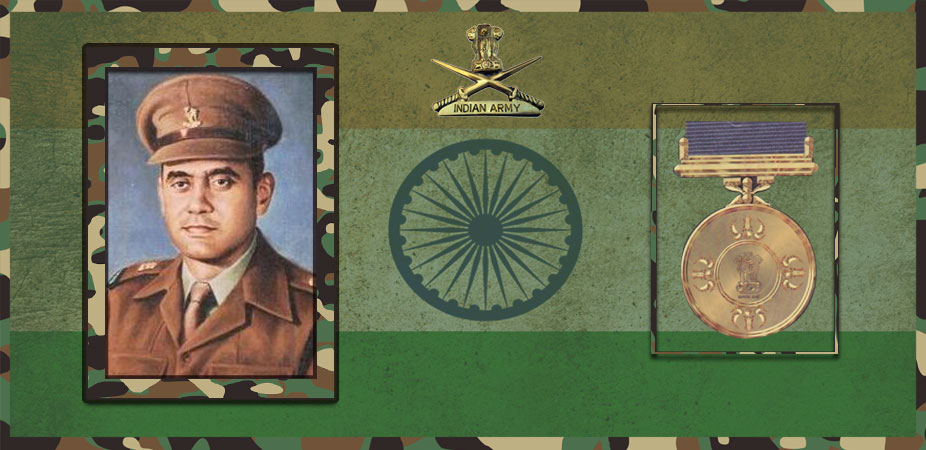Let's salute to our Indian Army together, We are proud to be Indian.
Let's salute to our Indian Army together, We are proud to be Indian.

Singh was born on 1 December 1924 at Bansar village in Jodhpur district, Rajasthan. His father was Lt Col Hem Singh Bhati.
In the 1962 Sino-Indian War, The ‘Ahir’ Company of the 13th Kumaon battalion, led by Shaitan Singh, held this crucial position at Rezang La, a pass on the south-eastern approach to Chushul Valley in Ladakh, in the state of Jammu and Kashmir, at a height of 5,000 metres (16,404 feet). The company area was defended by three platoon positions and the surrounding terrain isolated it from the rest of the battalion. The expected Chinese attack on Rezang La came on November 18 in the morning. It was the end of a very cold winter night, with light snow falling. The icy winds howling through Rezang La were biting and benumbing. More than the thin air and cold, the location of Rezang La had a more serious drawback. It was crested to Indian artillery because of an intervening feature, which meant that they had to make without the protective comfort of the big guns. In the dim light of the morning, the Chinese were seen advancing through nullahs to attack No.7 and No.8 platoon positions.
The Indian Army troops fell on their prepared positions to face the Chinese offensive. At 05:00 when the visibility improved, both platoons opened up on the advancing Chinese with rifles, light machine guns, grenades and mortars. Indian artillery could, however, not be used. The nullahs were littered with dead bodies. The survivors took position behind boulders and the dead bodies. The Chinese, though they failed the first frontal attack, were not discouraged. They subjected the Indian positions to intense artillery and mortar fire at about 05:40. Soon, about 350 Chinese troops commenced advance through the nullahs. This time, No.9 Platoon, which held fire till the enemy was within 90 metres, opened up with all weapons in their possession. Within minutes, the nullahs were again full of dead bodies, mainly of the Chinese.
Unsuccessful in frontal attack, the enemy, approximately 400 strong, then attacked from the rear of the company position. They simultaneously opened intense medium machine gun fire on No.8 Platoon. This attack was contained at the barbed wire fencing of the post.The Chinese then resorted to heavy artillery and mortar shelling. An assault group of 120 Chinese also charged No.7 Platoon position from the rear. However, Indian Army 3-inch mortar killed many of them. When 20 survivors charged the post, about a dozen Kumaonis rushed out of their trenches to engage them in hand-to-hand combat. Meanwhile, the Chinese brought up fresh reinforcements. The encirclement of No.7 Platoon was now complete. The platoon, however, fought valiantly till there was no survivor. No.8 Platoon also fought bravely to the last round.
Singh displayed exemplary leadership and courage in the battle of Rezang La. By all accounts, he led his troops most admirably. Unmindful of his personal safety he moved from one platoon post to another and encouraged his men to fight. While moving among the posts he was seriously wounded by a sniping Chinese MMG, but he continued to fight along with his men. While he was being evacuated by two of his comrades, the Chinese brought heavy machine gun fire on them. Singh sensed danger to their lives and ordered them to leave him. They placed him behind a boulder on the slopes of a hill, where he died, still gripping his weapon.